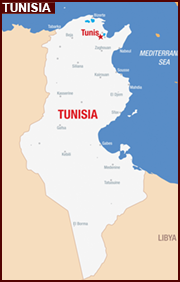Pharmacoeconomic Guidelines: Tunisia
Country/Region: Tunisia

Submission Guidelines
Methodological choices for Pharmacoeconomic Analysis at INEAS
Submission Guidelines Source:
Additional Information:
Submission File
Information current as of Thursday, March 17, 2022
Key Features
| Key Features | |
|---|---|
| Type of Guidelines | Submission Guidelines |
| Title and year of the document | Methodological choices for pharmacoeconomic analysis at INEAS (November 2021) |
| Affiliation of authors | Joint collaboration between the National Authority for Assessment and Accreditation in Healthcare (INEAS-Tunisia) and "Institut national d'excellence en santé et en services sociaux" (INESSS-Québec) |
| Purpose of the document | Establishing a common approach tailored to the Tunisian context for conducting pharmaco-economic analyses, based on the international state of the art while facilitating and promoting this type type of analysis for decision making by providing most important theoretical concepts |
| Standard reporting format included | Yes |
| Disclosure | This project has received funding from WHO and the authors have nothing to declare |
| Target audience of funding/ author's interests | Pharmaceutical companies that submit HTA dossiers to INEAS as well as other parties that wish to develop this type of study (exapmle : universities). |
| Perspective | Public payers: ▪ The National Health Insurance scheme (CNAM) ▪ The Public Health Structures (SSP) The societal perspective can also be submitted, as an additional analysis |
| Indication | The indication concerned by the pharmacoeconomic analysis must be mentioned and supported by the clinical data submitted (in the clinical part of the HTA dossier) |
| Target population | The target population should be the entire patient population concerned by the reimbursement indication. It must be be detailed in a comprehensive manner. |
| Subgroup analysis | Yes, must be detailed |
| Choice of comparator | The comparator(s) accepted by INEAS is (are) the standard therapy(ies) mostly used in clinical practice in Tunisia and in which public resources are invested. If there is noncovered technology(ies), all potential comparators representing the standard of care in Tunisia must be analyzed. The choice of comparator(s) should be clearly explained and justified; similarly, in the case of absence of a comparator(s). |
| Time horizon | The time horizon should be long enough to capture all the significant differences in costs and outcomes between the intervention and comparators. |
| Assumptions required | Yes |
| Preferred analytical technique | Cost-utilty analysis systematically associated with a cost-effectiveness analysis (cost per life-year-gained). Any other type pf analysis must be justified. |
| Costs to be included | All direct health costs (must be representative of the Tunisian context and reflect the analyzed perspectives), The data should represent the care pathway in Tunisia. In the absence of such data, the use of scientific literature as well as the opinion of clinical experts are considered appropriate. |
| Source of costs | Costs should be identified from Tunisian sources. The database of the National Insurance Scheme in Tunisia is a relevant source of data, whenever possible. Health resources utilization rates should reflect the care pathway in Tunisia. |
| Modeling | "Yes. Use of a validated model (i.e., having been published or evaluated by another HTA institution). The submission of an electronic spreadsheet (Microsoft Excel) for the PE model." |
| Systematic review of evidences | Yes |
| Preference for effectiveness over efficacy | No (given the scarcity of local clinical data). Efficacy and safety data should be of the highest level of evidence available. |
| Preferred outcome measure | QALYs and LYGs |
| Preferred method to derive utility | INEAS prefers an indirect measure of utility, using a validated tool. Failing that, other measures of utility may be submitted, including those identified through a systematic search of the scientific literature and other HTA institutions. However, a rationale and details of the data source must be provided. The utility values selected should, if possible, be recent and representative of the Tunisian population. |
| Equity issues stated | No |
| Discounting costs | Discount rate of 5%; conduct sensitivity analyses using 0%, 3% and 8% |
| Discounting outcomes | Discount rate of 5%; conduct sensitivity analyses using 0%, 3% and 8% |
| Sensitivity analysis-parameters and range | Yes, for the DSA, the range should be explicit, plausible and well referenced. If there are no sources to document them, a realistic range of variation should be considered (e.g., ±20%). For the PSA, the number of iterations performed, the range of values considered for each parameter, and the rationale for the distribution should be clearly stated and justified (e.g., demonstrate that increasing the number of iterations does not change the results). Ideally, the range of values should be supported by evidence. The probabilistic analysis focuses on specifically on the uncertainty of the inputs; methodological elements, such as the discount rate or time horizon, should not be subject to probabilistic analysis. However, the inputs considered in the deterministic sensitivity analysis should also be included in the probabilistic analysis. If not, justifications are required. |
| Sensitivity analysis-methods | Deterministic analysis with presentation of a Tornado diagram Probabilistic analysis with presentation of Cost-effectiveness acceptability curves and/or planes |
| Presenting results | Results should be in the form of an incremental cost-utility ratio (cost-utility analysis, ICUR) and an incremental cost-effectiveness ratio (cost-effectiveness analysis, ICER). Results should also be reported in a disaggregated manner. (A template is provided.) |
| Incremental analysis | Yes, with justification |
| Total costs vs effectiveness (cost/effectiveness ratio) | Yes |
| Portability of results (Generalizability) | Yes |
| Financial impact analysis | In a separate guide (Methodological choices for Budget Impact Analysis at INEAS) |
| Mandatory or recommended or voluntary | Mandatory in the HTA dossier if a product is prioritized by INEAS for HTA |
Acknowledgement: